Joint attention provides a common focus for 2 or more people. It’s the building blocks to develop social skills and early communication skills. Joint attention starts with a shared eye gaze towards an object. The skill progresses into conversation type behaviour and develops into pointing towards an object to show someone else. Joint attention is how we bond. It is also how we eventually see that others can have a different point of view to our own. Key to our children is that success in relationship building and emotional development are influenced by abilities in joint attention.
Who would benefit from joint attention activities?
- Children who play alone
- Kids who are reluctant to join you for a task
- Youngsters with limited language or no language
- Children who don’t yet engage with others spontaneously
- Early years classrooms, special education classrooms
- Caregivers bonding with their babies and children
A point to note is that a child’s early joint attention skills can be an important predictor of their future language development. For more play ideas for children with autism see Autistic Kids in Play.
Joint attention skills are crucial for child development. These early building blocks can be taught in the classroom in fun and exciting ways. Personally, these type of activities have become some of my favourite and most rewarding things to teach. Check out our top 8 engaging activities for this month! (And yes we did have fun creating the video!)
Main points to consider when creating joint attention
- Create an unusual exciting moment
- Build suspense
- Use short phrases or single words only to describe your actions
- Children can watch from a distance – they don’t have to be sat as a group. This is demand free moment – great for kids with PDA as it can be full of humour.
- Perform your joint attention activity in the same area of your classroom.
1 Tower Tumble
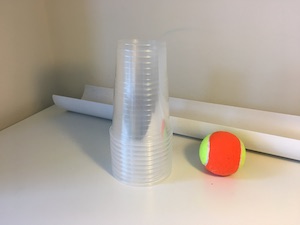
Build the perfect pyramid with cups and then knock it down! You will need plastic cups, a gutter and a ball. Ready, steady………GO!
2 Bubble Snake Blower
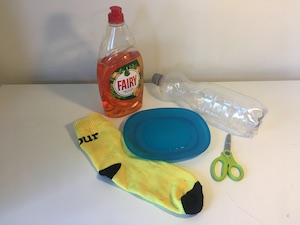
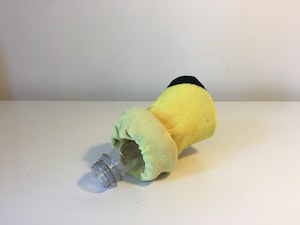
Cut a plastic bottle in half. Take the top section and cover over the bottom of it with an old sock. Put a mixture of washing liquid and water into a dish. Carefully dab the sock end into the mixture and 1, 2, 3……..blow!
3 Sponge Rainbow
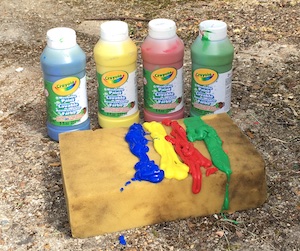
Show the colours and say each name. Squeeze each in a strip onto a sponge – the bigger the better! Paint a rainbow onto a large piece of paper or create any designs you like!
4 Roller Paint
Find an old paint roller and tray and fill with water. Dip the roller into the water and make designs on walls, fences or the ground. Whoosh!
5 Paint Splat
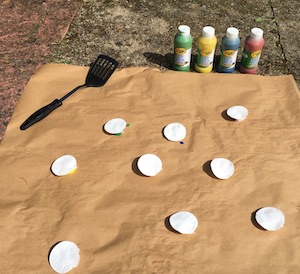

Hide good sized blobs of paint under cotton pads. Raid your kitchen drawer for a spatula and ready, steady……. SPLAT! Use the amazing piece of modern art as a classroom display.
6 Exploding Crocs
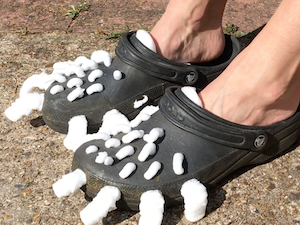
Only the brave will do this challenge. Fill up a pair of crocs with shaving foam or hair mousse. Watch the worms of foam appear as you slide or shove your foot into the shoe! Let your kids choose – fast or slow?
7 Diving Toys
Line up the classroom toy diving team on a platform next to a ruler. One by one walk each one along the diving board (ruler) and spring off into the bowl of water below. Build suspense, excitement with gasps of breath as they leave the board and plunge into the water below! Walk, walk, walk…. 1,2,3 JUMP!
8 Sandcastle Smash
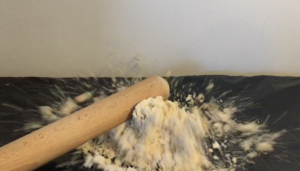
Create a mix of your choice. I tend to use homemade kinetic sand to make a good sandcastle. (1 part baby oil to 5 cups of flour). Take a rolling pin or a toy hammer and pause in the moment. Build the engagement and suspense. When you feel the tension in the room, smash the sandcastle! Ready, steady……….SMASH!
I love joint attention activities in our classroom and use them for all ages of kids. Joint attention activities develop into ‘hooks’ in mainstream lessons. They are the introduction to lessons or lectures and are used to gain the attention of everyone. Moments of joint attention show that you as the teacher, might be interesting and have something worth listening to and engaging in.
As adults in the classroom, don’t we all want this?
thinking differently
The Autism Junction